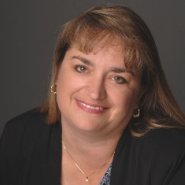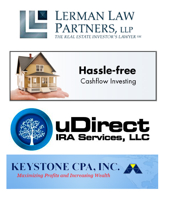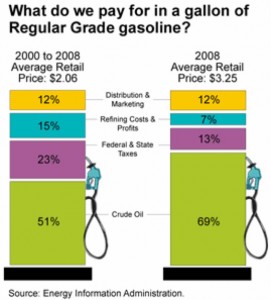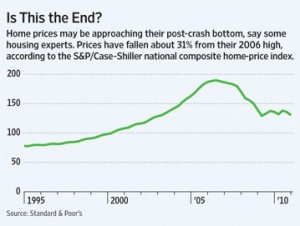Below is a summary of David Campbell’s Interview with Craig Haskell of the Value Hound Academy.
You can listen to the Full Audio Interview HERE
How a High School Band Teacher Became a Successful Real Estate Investor by Turning Distress into Profits as a Creative Deal Maker
 While a high school band director in Southern California, David bought his first investment property – a two bedroom condo. As the market value went up, he sold the condo and took the equity to buy more properties. Success really took off when David bought a 30-unit apartment building and converted the units to condos where he sold them for a sizeable profit.
While a high school band director in Southern California, David bought his first investment property – a two bedroom condo. As the market value went up, he sold the condo and took the equity to buy more properties. Success really took off when David bought a 30-unit apartment building and converted the units to condos where he sold them for a sizeable profit.
Since his days as a school teacher, David has been a principal or key adviser to over $800 million of real estate transactions. Because of David’s success, he has been in high demand as frequent guest speaker at numerous events, radios shows, and leading universities.
Believing that properties do not have problems, people do, David takes a people first approach toward finding creative solutions to properties. David’s unique gift is finding creative solutions to getting deals done, and in this interview, he shares some exclusive samples of his most creative deals.
Value Hound – You came from very humble beginnings as a high school band teacher. Today, you’ve built a sizeable international real estate investment company. Tell us how you got started and built your company.
Campbell – I started out teaching high school band, and my salary was less than $30,000 a year. Living in southern California, I figured out really quickly that was not going to be enough money to raise a family on, so I started looking for something else in the marketplace, and how could I make some ancillary income. Fortunately, in college, I worked at a mortgage brokerage office and a tax office, and I had a good financial background.
I went out, and the first thing I did was I bought a two bedroom, two bath condo, and I lived in one half, and I rented out the other half. Lo and behold, the first year, equity happened to me, and the property went up more than what my salary was. At the end of the first year, I said, “Look, I’ve got no money in my checking account, but suddenly I have a $30,000 net worth because of real estate that would not have been there any other way.” And that got me the bug.
I took that first concept and learned how to equity optimize and I pulled the equity out of that property, and I bought another house, and that property did well for me. And I bought four more houses, and those did well. So I doubled down and got eight more houses, and then got into an apartment building, and then I really got the bug for real estate development.
I started a home-building company and a commercial renovation company. We buy distressed shopping centers and fix their problems. I got the bug to go international. I looked at the Caribbean and Mexico and Canada, and some pretty viable places to invest, and it was just something that grew organically from a humble start with no capital, and really relying on my creativity and ingenuity, and relationships to really kind of bootstrap my way into a pretty healthy real estate company.
Value Hound – Were there one or two big things that really propelled your success?
I would say the first thing is just looking to give first, and realizing that the pie is big enough to share, and if you always lead with the question, “How can I add value to you?” or “How do I add value to the marketplace?”
In boom times, dumb people can make money just because the market’s going crazy. But in lean times, like we’re in now, many times you’ve got to be really smart, and you have to have some loyal people around you.
The most important thing in my business is to have integrity with the people who are on your team, add value to them first, and if they return value to you, then they’re a keeper. You know, they’re part of your team for life, and if you add value to them, and they just take and don’t return value, then you just say, you paid a little bit to learn that you just need to move on and find some new relationships.
The second thing is really just keep your eyes open for opportunity, and be, in many cases, have a good filter. I like to say that if you’re crystal clear on what you’re looking for, then the strategies and the tactics to achieve that objective are going to make themselves apparent to you. And it’s a great opportunity to just look for ways to find value, and the universe just gives back to you.
Value Hound – As you’re out looking for opportunistic and value-add deals in the distressed marketplace, what types of deals are you looking for?
Because my primary business is home-building, I am looking for sellers of land that are going to give me great terms because I’m a huge believer of the concept that terms are more important than price, and I’ve heard the story told many, many times: you name the price, and I’ll name the terms.
What I’m seeing in the marketplace is a lot of landowners, where they’re stuck on price, and my thing is terms, so I’ll say, “I’ll give you your price on your dirt, but what I want you to do is, number one, subordinate your equity to my construction loan; number two, give me a long take-down schedule on your lots.
If you’ve got 100 lots, instead of me buying 100 of them and paying interest and taxes and mowing and all of that while I am unable to use them,” go to the seller and say, “I’d like you to give me 3 lots a month, or maybe 2 lots a month for the next however many months it takes.”
The other thing I’m looking for is opportunities to trade equity. You know, find someone that has a property with equity in it, and trade it for a different property type that makes sense for you and solves their problem, or finding ways to solve a seller’s challenge by creativity.
I recently acquired a large commercial property in Dallas. It’s a former retail center and we’re working on changing use from retail into vehicle storage and a vehicle service center. That’s a very recession-friendly type of business. Everybody’s still driving, so they need a place to get their vehicles worked on, and I realize that retail is never coming back in this location, but a change of use was a great way for me to get income from the property that the seller hadn’t thought of. So I was able to buy property at an extremely great price and change the use of it and make a profit.
People are afraid of big boxes now because they don’t know what to do with them, and if you can get the building cheap enough, then it really opens it up to so many different uses.
Let’s say in a retail space, you might have spent $100 or $120 a square foot to buy it as a retail center, but the retail is dead and gone. The building is vacant and maybe if you can buy it for $10 or $20 a foot, which is way, way, way below replacement cost. Now, when your basis is $20 a foot, there are all kinds of uses that make sense there that didn’t make sense before, when it was $100 a foot.
Value Hound – I look around this country, and I see all of these vacant, boarded-up, former auto dealerships that are just sitting empty; there’s got to be some great uses for those empty buildings. Have you ever looked into that?
Campbell – Yes, and in fact, I’m actually partly contributing to that problem. I’m recently trying to aggregate a bunch of small auto dealerships into a single location because a lot of dealers have gotten smaller; they need less floor space, and they want to finally trim their overhead, and so by creating an auto center of multiple dealers. Maybe you can get 7 or 8 or 10 used car dealers into that same space, and then have shared overhead for office and financing and your title processing and things like that. So that could be one potential use.
The other is, when you’ve got lots and lots of land, you could either just look at doing a demo project and starting over. I’m working on a project now where it’s something similar to an auto dealership with good freeway frontage, and we’re working on making it into a truck stop. Where the former sales room was, you can put your showers and restaurants and things like that, and then all of the places where the cars used to park is a great place for the trucks to go.
The current distressed real estate market has created many vacant office buildings, vacant big box retail space, unsalable land, empty car lots, empty warehouse space, and much more. How can an investor creatively solve the empty space problem?
I’ve had great success starting with the property I owned or wanted to acquire, and setting up a meeting with either planning department, city council, city manager, head of economic development, or chamber of commerce. You say, “I’m the owner of the property at Main and Main and I’m having trouble with my property. What would you recommend? What would you like to see me do with the property? If you owned this property, what would you do with it?”
It’s amazing the uses that come out. Because oftentimes, a city will have a tenant that approaches them and says, “Hey, I’m a manufacturing person, and I’m looking for….”
I’m working on a deal right now where I’ve brought my property to the city, and I wanted a particular use, and the city said, “Well, that’s interesting, but we’re right now courting an industrial – manufacturing tenant that would really like to have a site similar to yours. Let’s make an introduction.” And that’s great.
I never would have had that connection or thought to convert – in this case, it was a retail property into an industrial property. But with the city’s introduction that was a good indication to me that I would get my change of use permit. Maybe – in this case, I did not need a zoning change, but perhaps, if I did, having the city initiate the project is sure helpful because then you can say, “Hey this was your idea to start with. Give me some support.”
Value Hound – Any other examples you can tell us about?
Campbell – I worked on an interesting project where it’s some city-owned land, and I really didn’t know who owned this land. I just thought it was a really great parcel, and I looked it up in the tax records, and lo and behold, it was owned by the city.
Knowing the city’s mission statement, I was able to get a good feeling for what things they’re proud of. I then went to that city and said, “What would you like to do with this land?” They said, “We have no idea.” And I said, “Well, you know, reading the mission statement of the city, I think this could be a good use.”
I proposed something that was ecological and green and helpful to the community. That’s a project in process, but that’s a great way to get into a project. In this case, I am asking the city to give me great terms on their land; maybe give me some special financing – some bond financing – and you never know what you can get if you’re putting your brain, your team and your intellectual resources behind something.
One of my mentors very early on said, “Never let the lack of capital stop you because if your deal is good enough, your idea is good enough, your team is good enough, the money will find you.” And that was a really freeing thought.
In this particular case, the gentleman said, “David, if you can’t fund your deal yourself, and it’s good, you come to me, and I’ll fund it.” And that was liberating. It was so liberating for me that I just stopped worrying about the money, and I just started worrying about – does it make economic sense? And if it does, someone will write the check.
Value Hound – You’ve been quoted as saying, “Properties do not have problems; people do.” Can you explain your philosophy and tell us how investors can capitalize on that?
Campbell – It goes back to understanding that the way to create value is solving problems, and every property is an opportunity. Sometimes it’s an opportunity for the buyer; sometimes it’s an opportunity for the seller. Really, if you ask great questions and you listen, sometimes you’ll find a way to create unique deal structures.
For example, every time someone is offering a property for sale, 100% of the time, that person has a need. Sometimes the need is to sell the property, and sometimes it’s not. Sometimes, what they’re really trying to solve is a need for cash. Sometimes they’re trying to just solve a management hassle. Sometimes it’s an inheritance issue, where they inherited a property, and they just don’t have the resources or inclination to continue managing it. Sometimes, their debt has expired and they have a balloon payment due, and can’t make it.
Value Hound – What other types of creative deal structures are you working on today?
Campbell – I’m putting a deal together where I’m trading a portfolio of notes that I created in exchange for a down payment on a medical office building. It’s a situation where the seller really would like all cash, but there are no buyers in the marketplace for his property using all cash, so I can come to the table with a 75% bank loan, and 25% cash down payment with the requirement that he then use his cash down payment, after close, to purchase my notes.
So basically, we can do a double escrow: I can sell him my note portfolio; he can sell me his property. In a sense, it’s an exchange, where we’re exchanging equity for equity, and it’s a way for me to get out of a note without discounting it. Most people would say, “Hey, you’ve got a note, and you want to get the cash? Well, go sell your note at a discount, and get your cash, and then go to the seller and give them your cash.”
Value Hound – What big mistakes are investors making when they’re trying to put together and structure deals?
Campbell – I think the first thing is not understanding the life cycle of cash, and saying, “Well, I’m going to put my cash into a deal,” without thinking about when they’re going to get that money back and how they’re going to get it back. I’m a huge believer in knowing when and how you’re going to sell the property before you buy it, or making the assumption that you’re going to buy it forever – you’re leaving it to your heirs.
So Rule No. 1: have an exit strategy before you buy. And the exit strategy isn’t, oftentimes, for the property; it could just be for your equity. That’s what I like to teach – you buy the property, get your equity back out, and keep the property. I really am a big believer of that, so if people are having a different strategy on real estate investing, I’m always curious to look at what their cash and cash return is when they leave their money in long-term.
You say, “Well, it’s nice if you’ve got a bunch of free and clear property, but what is your cash on cash return compared to, say – let’s say we pulled out 50% of that equity – conservatively – and we doubled the size of your portfolio. Then what would happen to your cash on cash return.
The second thing that is a huge mistake investors are making is not having a support team around them. I see people – oftentimes, they try to go it alone in a marketplace, or they assume that a group of professionals is too busy to take their phone call, and they just kind of muck it on their own. Or they try to just go around people and be secretive with their team.
It’s very much like going to your doctor and just saying, “I’d like some penicillin.” And the doctor says, “What’s wrong with you?” And they say, “I just want some penicillin. Give me some penicillin. It’s none of your business why I want penicillin. Just give it to me.”
I see investors make that kind of mistake in the marketplace, where they’re afraid to open up about what their personal investment philosophy is; what they’re really trying to buy. People don’t like to be sold, but people love to buy. I really encourage people to get a team around them, and then to say, “My personal investment philosophy is,” and then they can be very articulate about what it is.
There’s an infinite number of properties in the world, universally, and there’s no way you could look at all of them. You have to have search criteria, so when you go on the MLS and there’s six million properties in America for sale, how do you narrow that down to the one you’re going to buy? It’s simply by having good filters and making sure that your filters are consistent with your long-term vision.
Thirdly, I think, is insufficient cash reserves. Oftentimes, someone has $30,000, and they say, “All I need to buy this property is 30 grand,” and they put it all in. Then, the first cash call comes because they’re vacant or there’s a repair, and then they lose control over the property. I would much rather have – if I could choose between putting 20% down and having no money in the bank, or putting 5% down, and having 15% in the bank, I would much rather have the higher leverage and the greater cash reserves.
—–
David Campbell would like to thank Craig Haskell of the Value Hound Academy for facilitating this interview.















